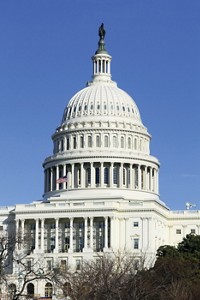Advertisement
Grab your lab coat. Let's get started
Welcome!
Welcome!
Create an account below to get 6 C&EN articles per month, receive newsletters and more - all free.
It seems this is your first time logging in online. Please enter the following information to continue.
As an ACS member you automatically get access to this site. All we need is few more details to create your reading experience.
Not you? Sign in with a different account.
Not you? Sign in with a different account.
ERROR 1
ERROR 1
ERROR 2
ERROR 2
ERROR 2
ERROR 2
ERROR 2
Password and Confirm password must match.
If you have an ACS member number, please enter it here so we can link this account to your membership. (optional)
ERROR 2
ACS values your privacy. By submitting your information, you are gaining access to C&EN and subscribing to our weekly newsletter. We use the information you provide to make your reading experience better, and we will never sell your data to third party members.
Business
Chemical Year In Review
by Josh Fischman
December 24, 2012
| A version of this story appeared in
Volume 90, Issue 52
This past year, C&EN’s weekly coverage had hundreds of articles on important research advances, industry developments, and vital policy news. Our annual Research Year In Review, beginning on page 20, reveals some of the superlative achievements we featured in 2012. For instance, scientists made major progress in atomic-resolution imaging and began to capitalize on the synthetic potential of so-called frustrated Lewis pairs. Our selections, displayed in no particular order, are subjective and not intended to be comprehensive. What they do represent are some of the many ways that chemists are pushing the boundaries of what we know and are capable of doing.
In business, recapped starting on page 24, the industry’s return to full health after the Great Recession of 2007–09 was interrupted this year by a relapse into global economic doldrums. Europe in particular took a turn for the worse. There, the sovereign debt crisis has led to government austerity budgets and, in some countries, recession. Europe’s chemical output contracted by 2% in 2012, according to the European Chemical Industry Council. Reacting to the poor economy, chemical companies such as DSM, DuPont, and Dow Chemical unveiled rounds of layoffs to cut costs. And globally, plant explosions hurt supplies of some specialty materials. In the crowded cleantech field, some firms failed outright while others formed partnerships to increase their chances of survival.
But business wasn’t bad worldwide. The U.S., with a relatively strong economy and plentiful shale gas resources, remained a bright spot for chemical makers. This year and last, the U.S. has attracted $30 billion in chemical investment, according to the American Chemistry Council, the U.S. chemical industry’s main trade association.
In the U.S. Congress, the past year was less than rosy, which is our focus starting on page 31. Bitter partisanship between Democrats and Republicans in the legislature meant there was little progress on tackling key science issues such as climate change, energy policy, or attempts to reform the Toxic Substances Control Act.
Federal lawmakers, however, did manage to pass some legislation, including measures to protect federal whistle-blowers, reauthorize user fees at the Food & Drug Administration, and normalize U.S. trade relations with Russia.
But a shadow has been cast over all of this activity: The stalemate over deficit reduction and arguments about ways to avoid the so-called fiscal cliff, which involves significant cuts to federal programs that fund research, as well as expiring tax cuts.
Our look at 2012 ends with striking comments, taken from C&EN’s pages and blogs. In addition, our art directors have chosen photos from the year’s news; turn to page 36 for this collection.
Finally, on page 38, we look back a decade to see which research discoveries from 2002 have made a big impact today, and which have lost some luster. That year, it turns out, was an important one for the chemistry of lithium-ion batteries, which are likely powering a device you’ve used this very day.





Join the conversation
Contact the reporter
Submit a Letter to the Editor for publication
Engage with us on Twitter